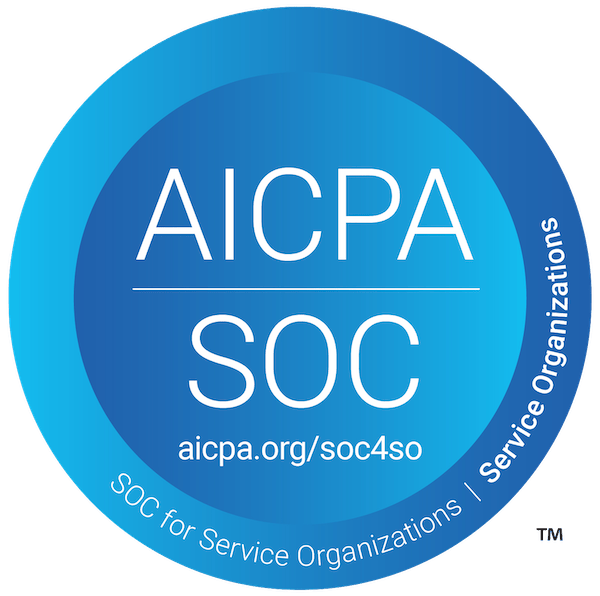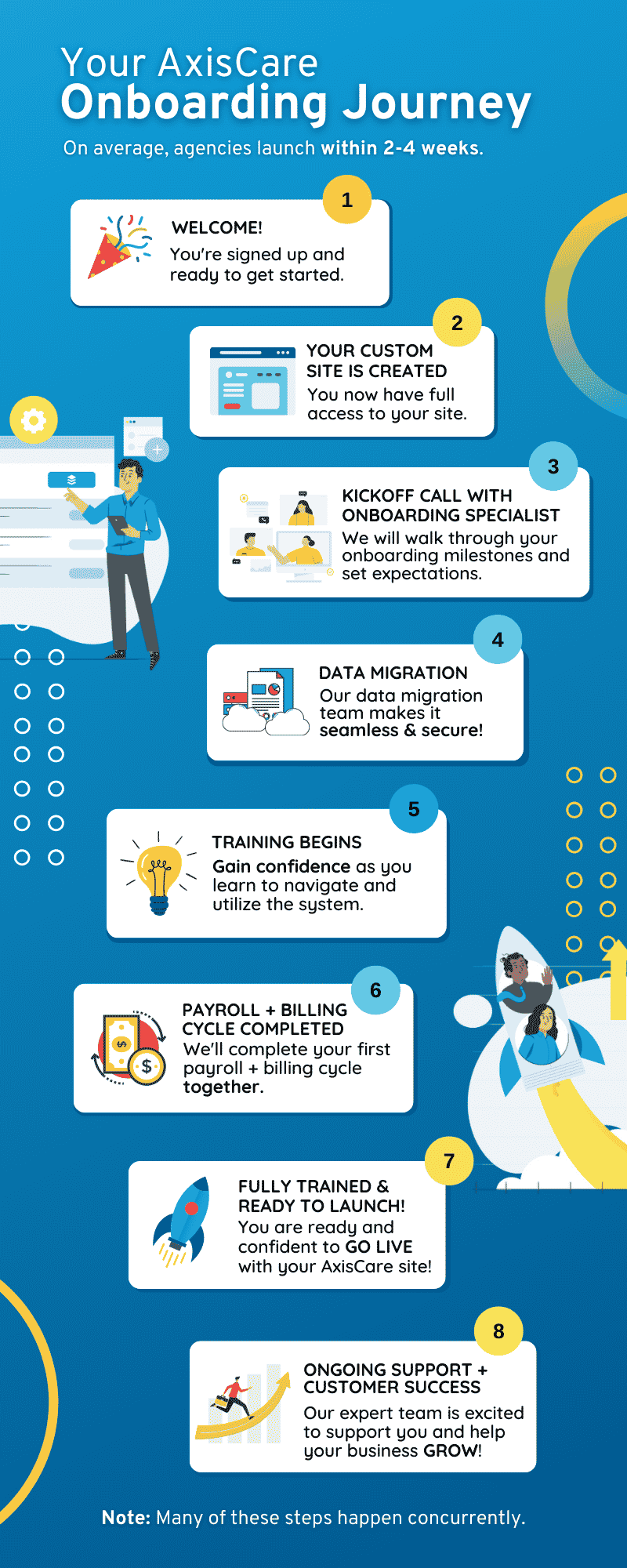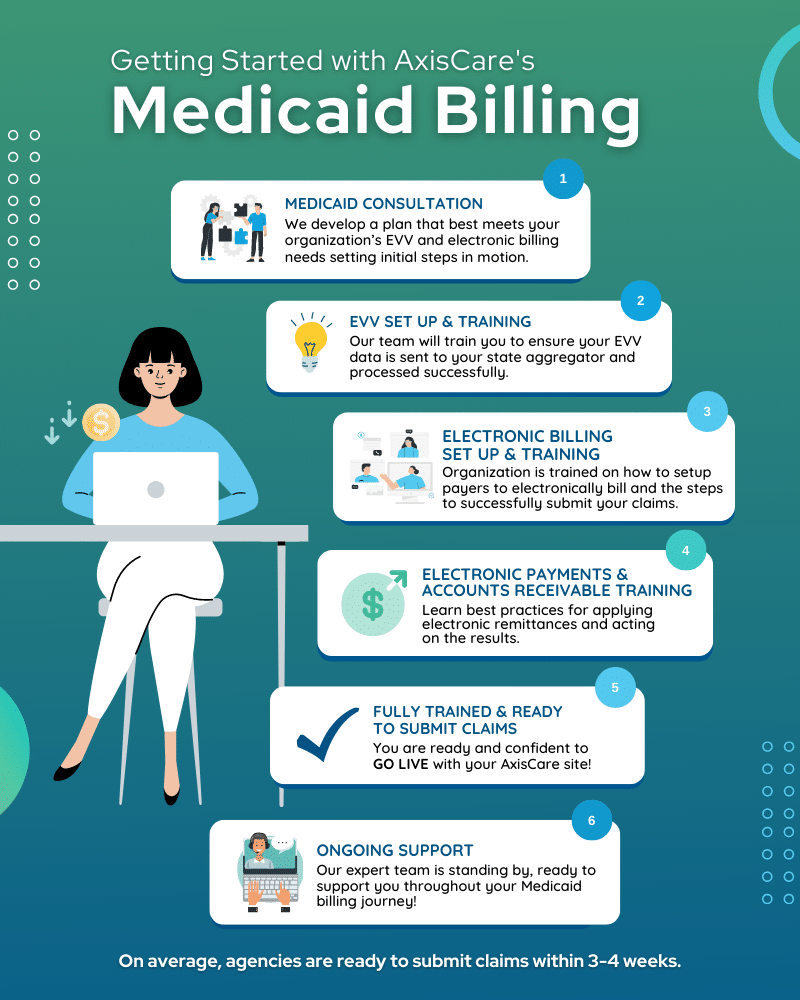Your onboarding process is the gateway to ensuring new hires are set up for success from day one, but it also can be the difference between retaining employees long term and losing them to your competitors. While you may assume that much of a new employee’s knowledge will be learned on the job, it’s important that your onboarding process prepares new hires for their position and sets their expectations of their team and the company as a whole.
We’ve summarized some tips for how to make your homecare onboarding experience more efficient below so that your new employees can become instant assets to your agency.
Caregiver Onboarding Process
1. Start Before Day One
To save time on behalf of both your HR team and your new employees, share any paperwork and onboarding materials that need to be filled out prior to the employee’s start date. This will speed up the process once they arrive onsite and allow them to get started on more job-specific training right away. Pre-employment documents can include your new employee’s personal contact information, direct deposit authorization forms, tax forms and I-9 verification, and your employee handbook.
Since starting a new job can be nerve-wracking, step us as a standout employer by making your new hires feel welcome from the get-go. Have key team members reach out to them personally, and consider highlighting your new employee on your social media accounts. You can even give them some company swag, like a water bottle or sweatshirt, to instill a sense of pride and excitement.
2. First Day Orientation
The first day of orientation is a crucial step in the onboarding process for caregivers. It sets the tone for their experience and helps them feel welcome and well-prepared for their new role. Typically, the day will begin with a warm welcome from management or the HR team, as well as introductions to other key staff members.
They will complete any essential paperwork that was not sent over beforehand, then attend an orientation presentation that covers important information such as agency protocols and processes. Caregivers will also be introduced to the typical care plan framework and may receive training on specific client needs, preferences, and any specialized care requirements.
3. Caregiver Specialized Training
Ensuring caregivers are well-prepared to deliver quality care starts with comprehensive training programs. These curriculums should be a balanced mix of theoretical learning and hands-on practical application, as well as continuous education over a longer timeline.
As a caregiver, soft skills are an equally important part of the equation. Effective communication and empathy are crucial for fostering a person-centered approach to care. A supportive work environment, including resources and mentorship, will enhance job satisfaction and foster a collaborative internal culture.
4. Set up a 30/60/90 Day Plan
A 30/60/90 plan outlines what’s expected of an employee after they have completed one, two, and three months in their new role. It helps establish a cadence of open communication between the new hire and their manager while demonstrating that the agency is investing in them by ensuring their skills are developing at the proper pace.
These plans should be created by the new hire’s manager, but certain milestones can be left blank for your employee to fill out, encouraging them to reflect on what they hope to accomplish in their first few months of employment. This will give them a sense of ownership over their success and motivate them to learn new skills.
5. Outline Company Best Practices
Any company standards or best practices should be shared during the employee’s first few weeks. That way, you’re getting your employee started on the right foot through tried and true methods others have learned with your agency. Topics may include how to handle confidential patient information, proper documentation and reporting procedures, and empathy-driven communication protocols.
Additionally, cover more granular policies such as dress code and behavior. Make sure your employee understands that they represent your agency, and they should do what they can to uphold its high standards of professionalism.
6. Ask For Feedback
Ask your employees for feedback on their onboarding process to find out what’s working and what needs improvement. Asking for feedback is the perfect way to gauge the effectiveness of your processes and to make sure your employees know that their voices are heard. Based on common threads that emerge over time, make adjustments as needed for continuous improvement.
7. Use Technology to Digitize Your Onboarding Process
If your agency isn’t using a digital system to manage the onboarding process, keeping organized can become pretty overwhelming. Hiring softwares like Hireology offer an all-in-one package specifically geared toward helping healthcare agencies manage the entire hiring process, from attracting applicants to onboarding employees. Hireology also easily integrates with other people operations platforms, including AxisCare scheduling software, which eliminates the need for manual processes that bog down your HR team.
An efficient onboarding process can positively impact your employees long after their first weeks with your company. If you’re interested in seeing how Hireology can change your entire hiring process for the better, you can request a free consultation here.
Why Caregiver Onboarding is Crucial for Retention
A strong foundation is the best marker of future success. Frustration often crops up when employees are unprepared or have misaligned expectations, so caregivers who receive comprehensive training and support are more likely to stay with an organization.
Well-trained practitioners will also be in a better position to deliver excellent care to your patients, leading to better outcomes and increased satisfaction.
Best Practices for Caregiver Onboarding
Clearly, agencies have a tall order to fill when it comes to creating and deploying an onboarding strategy. Here are a few tips to ensure a successful rollout.
Provide a Caregiver Onboarding Package
New hires should be provided with a comprehensive onboarding package, so they can refer back to key concepts whenever necessary. This document can act as a handy touchpoint for quick questions, covering key topics from safety protocols and reporting procedures to the company’s mission and values.
Utilize Interactive Training Methods
To maximize knowledge retention, you’ll need to give new hires hands-on opportunities. Text-based training documentation is certainly a helpful reference point, but it should be mixed in with more engaging activities.
Simulating real-life scenarios using role play will challenge employees to apply what they’ve learned, and group discussions are great for sharing experiences, insights, and best practices. Interactive workshops are also a dynamic format that encourages open dialogue.
Provide Ongoing Support
Onboarding is just the first step of a long-term employee enrichment strategy. Routine check-ins – whether weekly, monthly, or quarterly – are a great way to see how caregivers are faring and whether they require additional support. Management should also make themselves approachable and available day-to-day, so team members feel comfortable sharing their feedback on an ad-hoc basis.
Assign Experienced Caregivers as Mentors
Mentors provide valuable guidance and support for newer caregivers, offering insights based on their own experience. This type of professional relationship fosters a sense of confidence in navigating the complexities of caregiving, while providing an essential resource for one-to-one advice and guidance.
Tailor an Engaging Caregiver Onboarding Process With AxisCare
Weaving automation into your onboarding flow is the best way to standardize and organize the process. Thanks to our integration with Hireology, all of your hiring information can be synced directly into the Axiscare platform. Schedulers can then immediately begin sending open shift opportunities to those caregivers, providing rapid care to clients in need.
Want to learn more? Request a demo.











